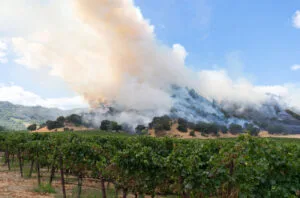Campania’s regional capital Naples has an air of excitement about it, a palpable energy – anarchic at times – that makes it unique among Italian cities. Living right next to a potentially active volcano (Vesuvius) can do that. Eclectic architecturally, this strategic port on the Bay of Naples has been shaped by its many histories, from ancient Greek and Roman times through myriad periods of occupation, to its role as one of Europe’s major cultural centres from the 16th-18th centuries. It was a capital of the Bourbon Kingdom of the Two Sicilies until Italy was unified in 1860.
Greek vines landed in Italy near Naples in the 8th century BC, and from there spread throughout the peninsula. Wine was an integral part of Roman culture and at Pompeii traces can still be seen in vineyards replanted using the Roman grid. The Campania region is home to many of southern Italy’s most important grape varieties, from whites Fiano and Greco di Tufo to the robust red Aglianico, used in Taurasi. Minor varieties that grew on volcanic soils survived phylloxera and are now being rediscovered, including Falanghina and Piedirosso. Vines are grown throughout the region, with wines produced in every terrain, from the Amalfi Coast to the high hills of Irpinia and the Cilento.
Where to stay
Naples is best explored on foot: just leave your Rolex at home. To make things easier, stay at one of the B&Bs in the House in Naples group, in the city centre, which offer environments






